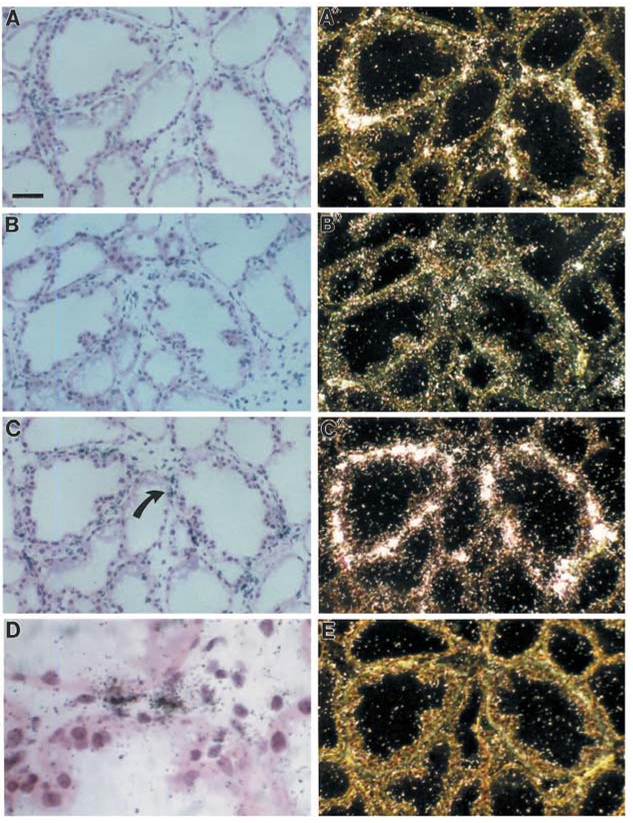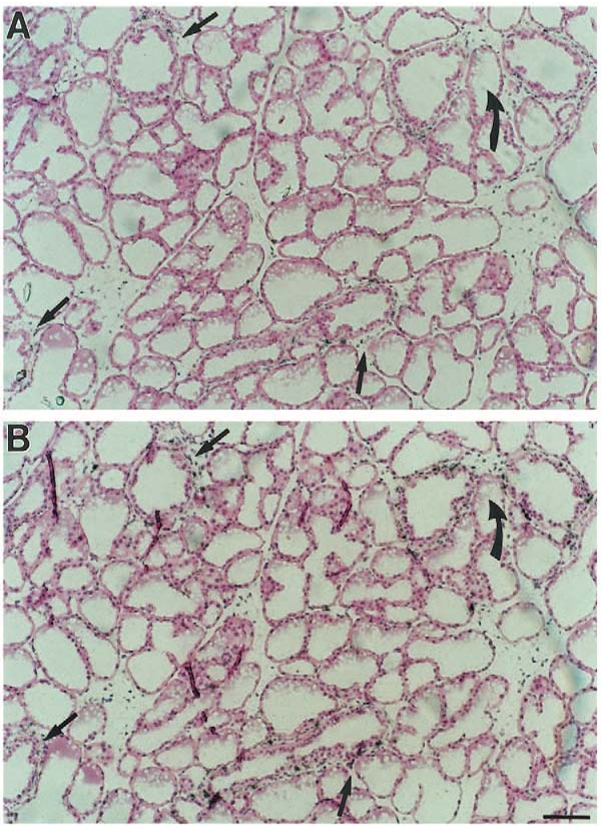Q2. What is the effect of hydrocorticoid treatment on the ventral prostate?
Glucocorticoid treatment has earlier been shown to inhibit the involution of the ventral prostate gland after castration and to affect apoptosis-related gene expression (Rennie et al., 1989; Freeman et al., 1990).
Q3. What is the RNA level after hydrocortisone treatment?
After normalization to the level obtained for the 28S RNA, the value obtained at day 5 of involution without treatment was set equal to 1 for each probe, and the values after hydrocortisone treatment are indicated as -fold induction or reduction.
Q4. What is the effect of a transforming growth factor 1 transgene on the mamm?
Targeting expression of a transforming growth factor 1 transgene to the pregnant mammary gland inhibits alveolar development and lactation.
Q5. How much did uPA decrease in the hydrocortisone-treated gland?
in the hydrocortisone-treated gland, -casein decreased only to approximately 35% of its lactating level, similar to that of a normal day 2 involuting gland, whereas in the saline-treated involuting mice it decreased to 5% (Figs 2C,D, 9D).
Q6. how long did hydrocortisone delay the growth of the mammary gland?
The start of hydrocortisone treatment could be delayed up to 3 days after weaning and still delay the regression of the gland considerably, as judged by morphological and biochemical criteria (data not shown).
Q7. How did the authors find connective tissue collagens around major ducts and vessels?
By trichrome staining, the authors found connective tissue collagens around major ducts and vessels, whereas only very faint staining or none was observed around the intact lobules and the interstitial septae (Fig. 1D).
Q8. how many mice are used to reduce the effect of variability?
The results shown are from a typical single experiment, which included pooled tissue extracts from at least 3 mice to reduce the effect of variability between individual mice.
Q9. What is the role of stromal cells in the regulation of progelatinase?
In a recent study MT-MMP and gelatinase A, but not stromelysin-1 and interstitial collagenase, were shown to be co-expressed by stromal cells in human colon, breast and head and neck cancer (Okada et al., 1995).
Q10. What is the role of MT-MMP in the mammary gland?
Future studies are required to determine the cells responsible for the synthesis of MT-MMP in the mammary gland and the biochemical effects of this potential activator of progelatinase A in vivo.





